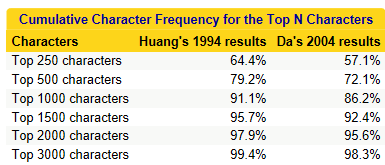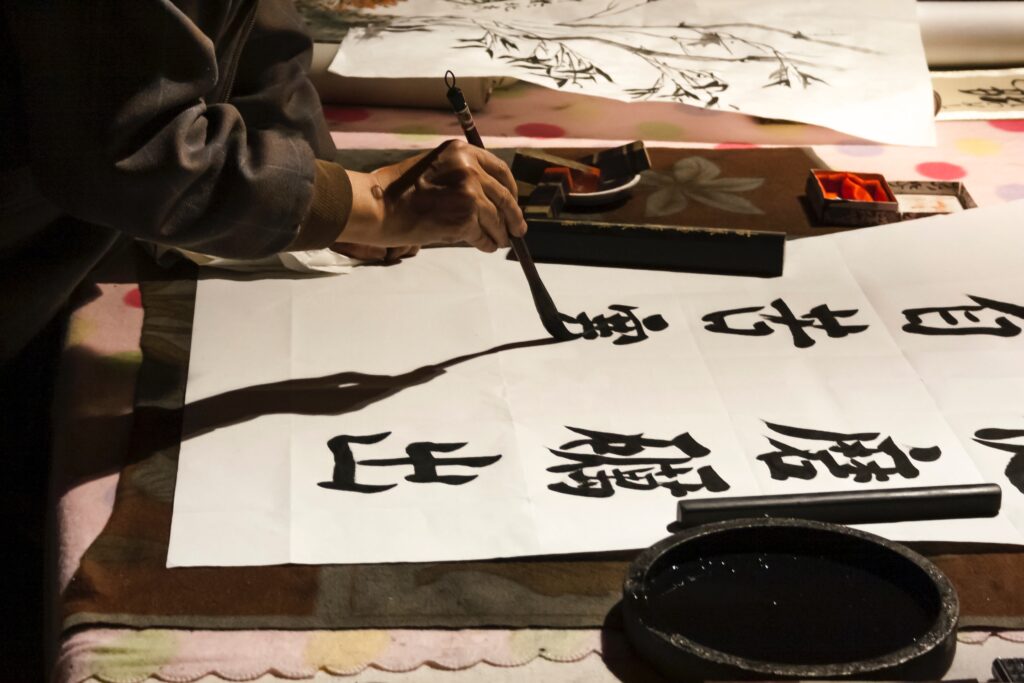Written by Sweta Tagliabue, Marketing Executive at China Unbound
Have you always thought that learning Chinese is way too complicated for you to even try?
Have you always thought that the written language is just impossible to master because of the complexity of Chinese characters?
We are going to demystify some myths on Chinese characters and you’ll see that learning Chinese characters is not only possible but also enjoyable. In fact, if on the one hand it’s true that about 3,000 to 4,000 characters is needed in order to understand a standard Chinese Newspaper [1], did you know that just 250 characters is needed to understand daily conversations?
Over the next few weeks, we will share FIVE POWER TIPS to show you how to learn Chinese characters with less effort! Here is first one…
Power Tip #1:
Learn The Most Frequently Used Characters First!
In daily life, just knowing the top 250 characters will enable you to understand 57% to 65% of the Chinese words used [1].
What’s more, guess how much would you understand if you know the top 500 characters? A whooping 72 to 79%!
If you understand the top 1000 characters, you will understand 86% – 91% of the Chinese language.

So understanding (at least the majority) of the Chinese characters is achievable with a MUCH smaller set of characters we may think, all you need to do is focus on these words first, and understand the basics of Chinese characters and how they work.
[1] This section draws the information from the article Learning the most commonly used Chinese Characters and, in particular, from the analysis performed by Jun Da.
Power Tip #2:
Recognise The 4 Basic Character Structures
- Singular characters: made up of one single ‘component’ → 二, 六, 言, 目, 因
- Left and right characters: made up of a left and right part → 什, 她, 冰
- Top and bottom characters: made up of a top and a bottom part → 花, 家,学
- Outside and inside characters: made up of an inside and an outside part → 回, 国, 园

Power Tip #3:
Understand The Basic Stroke Orders
Each Chinese character is made up of different strokes. We define “stroke” as one single stroke of the pen. In other words, every time you lift up your pen and start to write again, you are starting a new stroke.
Below is a list of the four basic strokes:

Horizontal Stroke

Vertical Stroke

Left-Falling Stroke
Writing from top to bottom, and curving to the left

Dot
Small movement of the pen, from top downwards, towards left or right
So where do we start when we write a Chinese character? Here are the simple principles to follow:

From left to right

From top to bottom

From outside to inside
Power Tip #4:
Left = Meaning, Right = Sound
What makes Chinese characters difficult to memorise and write is the amount of strokes that each character is made of. But if we look closer, we will notice that every character is made of specific components (called ‘radicals’) which have some specific meanings on their own.

As a general rule, the right hand side of the character indicates the sound, whereas the left hand part of the character indicates the meaning by indicating the group of ‘things’ it belongs to.Yes, there are exceptions but this is the best guess you can make if you have to guess the meaning and the pronunciation of a new word you don’t know.
Here comes the last but not least power tip:
Power Tip #5:
Learn Common Radicals
Every Chinese character is made of RADICALS, components that indicate a specific area of meaning. A good way to pick up characters really quickly is therefore to learn the most commons radicals. Here’s some example below, divided by area of meaning.

PEOPLE
- 亻means ‘person’. It’s used in 你 (you), 他 (he).
- 女 means ‘woman’. It originally came from a picture of a woman. It’s used in 她 (she), 妇 (woman), 婚 (marriage).
THE NATURAL WORLD
- 土 means ‘earth’ and it appears in 地 (earth), 场 (site/court), 城 (city wall), 块 (a piece).
- 木 is a picture of a tree. Usually this radical comes up in names of anything that could be made of wood, like 机 (machine), 根 (root), 村 (village), 材 (material), 松 (pine tree).

Now, can you see how learning Chinese characters is not as daunting as you thought and can even be enjoyable? The key is to understand the logic behind them. Hope you found this helpful!




